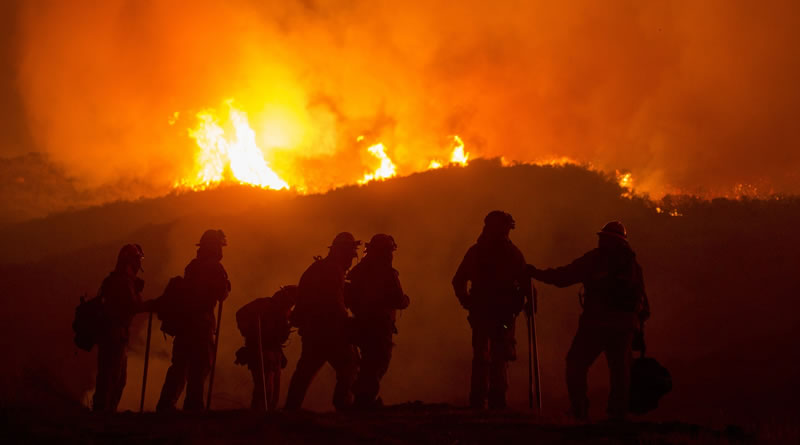Review: A Deep Dive into Fire Recruitment in Australia
Introduction:
Becoming a firefighter in Australia isn’t just a matter of demonstrating physical prowess; it also involves showcasing a sound understanding of the role and a keen attitude towards it. One of the key hurdles in this path is the firefighter interview, a process often shrouded in uncertainty for many aspirants. But, what if you could be a step ahead by knowing exactly what to expect? In today’s review, we will discuss the crucial product – “What sort of questions will I be asked in a firefighter interview?”. Designed with the Australian fire recruitment process in mind, this guide promises to be an invaluable tool. Let’s delve in to see if it truly stands up to the challenge.
Contents:
Understanding the Need for the Guide
The Spectrum of Questions Unveiled
Advantages of Preparing with the Guide
Understanding the Need for the Guide
Navigating the tricky waters of Fire recruitment in Australia can be daunting. First and foremost, there’s the challenge of distinguishing oneself from thousands of other hopefuls. Within this context, every bit of preparation counts. And while many focus on the physical tests and written exams, the interview is where the real mettle is tested. Enter this guide. Not just another generic manual, this product is curated specifically for the Australian context, ensuring that every potential question is relevant and tailored for local interviews.
The Spectrum of Questions Unveiled
So, what does the guide offer? First off, it promises to unveil a spectrum of questions. And true to its word, the content spans various categories:
- Technical questions related to firefighting tactics and tools.
- Behavioural inquiries probing your response in high-pressure scenarios.
- Teamwork-centric questions, given the collaborative nature of firefighting.
- General questions about motivation, long-term plans, and alignment with the department’s values.
Each section is diligently fleshed out, offering not just the questions, but insights into what the panel might be seeking in an answer. This dual approach not only prepares candidates for the interview but also provides them with a deeper understanding of the role itself.
Advantages of Preparing with the Guide
By now, you might be wondering about the benefits of this guide in the competitive realm of Fire recruitment in Australia. Well, the advantages are manifold:
- Confidence Boost: Knowing what to expect always gives a psychological edge. With a clearer idea of potential questions, candidates can walk into the interview room with increased confidence.
- Targeted Preparation: Instead of preparing blindly, aspirants can now focus on specific areas, ensuring a more comprehensive readiness.
- Insights into the Panel’s Mind: The guide doesn’t just offer questions; it also provides a peek into what interviewers are genuinely seeking, allowing for more nuanced answers.
Final Thoughts: An Unmissable Asset?
Fire recruitment in Australia is undeniably challenging. Every step, especially the interview, requires meticulous preparation. The “What sort of questions will I be asked in a firefighter interview?” guide emerges as a beacon in this complex journey. Tailored for the Australian context, brimming with potential questions, and offering invaluable insights, it stands as an essential tool for every firefighting hopeful. In the world of Fire recruitment in Australia, this guide might just be the edge you need.
Summary:
For those diving into the realm of Fire recruitment in Australia, understanding the interview process is paramount. This review introduced a dedicated guide tailored to uncover the questions one might face during this critical stage. From technical inquiries to behavioural probes, the guide comprehensively covers the potential spectrum. With its targeted approach and deep insights, it promises to be an invaluable asset for all aspiring firefighters down under.
The firefighter training program has never been so important. With the effects of climate change and emergency responses increasing as the population grows in Australia. There are a number of challenges that must be identified and well planned. Always with the goal of ensuring the hard work firefighters do on the fire-ground is supported effectively.
Firefighter training program for large and small fire brigades:
Even though training is often seen as more critical for large fire brigades as opposed to smaller brigades. A life is a life, and whether a firefighter comes from a large or small department their training must be considered just as critical. Above all, there might be a greater intensity and commitment required for larger brigades, but generally, training is no less important for either.
This brings us to the structure of firefighter training. As with the business community, there is a need to provide a structure that works effectively. In Australia, the National Training Framework has provided a great underlying basis for providing an efficient and structured training environment.
With some fire agencies becoming decentralized it seems that the structure of programs has become somewhat fragmented. As with all business systems and processes every internal and external part needs to be interlinked to ensure organisational goals are achieved successfully.
Firefighters on the ground – are they providing the outcomes?
There is a lot of good training being provided by brigades, but private industry is the leader here. Industrial training has evolved from a need to ensure that every employee is safe and has adequate skills to perform a given task. The side effect of this evolution has been an increase in productivity and efficiency.
It does seem like the drivers for a more consistent approach will come from members of brigades and their supervisors. There is one other factor that may force change and that is a catastrophic incident. Lets hope this isn’t the pathway we are forced to take.
Is competency or proficiency what we are trying to achieve?
Competency can be defined as an ability to complete a task successfully and efficiently. Proficiency is the degree of competence or expertise. I’m sure all trainers would like to think that their students at the end of a course are well on the way toward proficiency. Sadly, courses are often seen as the means to an end. When in reality it is just the start of the training pathway.
The skills taken away from a course are often beneficial to the student growth and ability to keep themselves and others safe. Therefore, once the training is complete organisation often expect that they will perform to a level most would consider proficient. In reality, this is unlikely, unless they have had experience prior to the training and the goal was only a qualification.
To enhance and develop firefighter training, at every level, a formal method of mentoring and guidance should be incorporated. Timely mentoring will develop proficiency and providing support, rather than the individual firefighter being left to work it out on their own. The guidance provides the firefighter will a feeling that they are being supported by the organisation. In turn, they are more likely to see their service to the community as a positive personal development exercise.
Bringing training to the country.
Australia is a big place and fire coverage has to be provided to communities all over the country including remote and semi-remote locations. The only way firefighter training programs can provide essential competencies and mentor is to take the training to rural Australia. It may all seem a bit too hard, but the impact of not providing the resources to train firefighters could have dangerous consequences.
As mentioned previously systems and processes have been used by business with good effect. Gathering data on what works and what doesn’t, allows training managers to make informed accurate decisions. Incorporating this with human resource development and analysing time management will result in positive outcomes.
It’s not hard to imagine a program in one community being structured slightly different for another. Where a system has been developed with input from many stakeholders there will be flexibility to adjust as required.
It’s evident that the systems and processes often already partly exist. Poor communication and implementation often contributes to programs becoming fragmented and non-effective. Generally impacting on those that need it to work most. Communities that are more than a couple of hundred kilometres from the main urban centres.
Using the resources of private industry.
It is very easy to criticise organisation who aren’t managing there systems and processes well, but this achieves nothing. However, the benefits and changes will come but there is always a lag time. Some of the resources that need to be realistically analysed are the increased use of online training and incorporating it with offline training.
Really there is no reason, where practical, theory components can’t be provided online and practical components conducted face to face at a later time. It may sound simple and in reality, it is. Without complicating thing this is where the human resources development factor comes in with an emphasis on time management and documentation. It’s here we can say that data and its analysis is king.
Instructors and teachers have a large responsibility as they are potentially the main providers of raw data to be analysed. If they provide bad data then its likely that the results will be bad. We probably now should look at how data can be used to help us bring real workable benefits.
The following is a number of situations where we can gather data and analyse it. Furthermore, results could then provide input to tweak or change the firefighter training processes. We may even find that we need to provide increased support to fill gaps. Where training personnel and instructors lack the skills to provide efficient and effective outcomes. It’s essential mentoring is used to overcome this problem.
What can we analyse?
- Comments made on feedback forms after training
- Comments made by students to instructors in relation to training
- Results of surveys
- Results of brigades training need analysis
- Assessment results – categorised into a brigade, district region etc.
- The cost of resources required for a specific program including food and drinks.
- Attendance rates and students who failed to show.
- Travel times from point ‘a’ to ‘b’.
- Number of kilometres travelled
- Cost of wages
- Cost of industrial agreements.
- Booking facilities
- And many more. . . .
I’ve listed 12 items but this is just a start. There is a number of other factors we could analyse which may result in better outcomes for firefighter training.
Finally, the one thing that is quite evident within the firefighter training program disciplines is that it’s complex and one size doesn’t fit all. If your brigade or fire department is frustrated with your training please leave me a comment. Let’s start a conversation. Thank you for reading.






